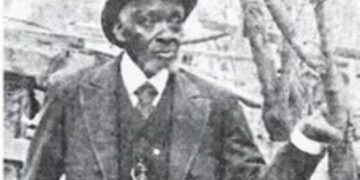
But what exactly is the Southern Gospel Music Hall Of Fame? Does it physically exist? The story is quite interesting and, in all honesty, rarely told.
The Southern Gospel Music Hall Of Fame is administered by the Southern Gospel Music Association (SGMA). This is a completely separate organization from the Gospel Music Association (GMA). To complicate matters further, there is both a GMA Hall Of Fame and an SGMA Hall Of Fame.
In 1964, the Gospel Music Association (GMA) was organized by a number of prominent figures in southern gospel music, including James Blackwood, Vestal Goodman, and J.D. Sumner. Its goal was rather straightforward – to support and promote the growth of gospel music. But also, the GMA sought to establish (and build) a Hall Of Fame, not unlike the Country Music Hall Of Fame.
In 1969, the GMA introduced an annual awards banquet which continues to this very day – the Dove Awards. Two years later, a Hall Of Fame was established. Throughout the 1970s, names such as Albert E. Brumley (writer of “I’ll Fly Away”), Lee Roy Abernathy, G.T. “Dad” Speer, Fanny Crosby, Mosie Lister, and even Mahalia Jackson were added to the Hall Of Fame. However, this Hall Of Fame did not physically exist. There were plans to construct a Gospel Music Hall Of Fame and Museum, but such plans never came to fruition.
By the early 1980s, the GMA was beginning to embrace – and promote – the rapidly growing Contemporary Christian Music (CCM) industry. Some in the southern gospel industry felt that the GMA was often times overlooking ‘traditional’ or ‘southern’ gospel music. This was perhaps most evident in the Dove Awards telecasts – where southern gospel performances, more or less mentions, were few and far between.
Thus, in 1982, the Southern Gospel Music Association (SGMA) was organized. Its goals were nearly identical to that of the GMA, but with an emphasis on solely southern gospel music. Like the GMA, the SGMA also sought to build a Hall Of Fame and Museum.
This first version of the SGMA only lasted until the mid-1990s. In 1994, it was re-organized with the same goals, including construction of a Hall Of Fame.
The story now jumps to around 1996. A developer in the Sevierville, Tennessee, area, Lee McCarter, gifts over five acres of land to the SGMA for construction of a Hall Of Fame and Museum. This was to be part of a larger Christian development project called “Echota”. (The site is still visible off Winfield Dunn Parkway in Sevierville). A land dedication ceremony was held on May 21, 1996…and that’s about it. That’s as far as the Echota project got. The problem? The SGMA, a non-profit organization, would have to raise well over $2,500,000 to construct the facility.
That same year, Dollywood, in Pigeon Forge, Tennessee, begins hosting a ‘Southern Gospel Jubilee’ to coincide with their annual Harvest Festival in the fall. The event, which brought a number of southern gospel groups to the park, was an overwhelming success. Seeing the success of the Jubilee, and the challenges the SGMA was facing (barely $250,000 had been raised), the Dollywood executives had a solution: Dollywood would become home to the Southern Gospel Music Hall Of Fame and Museum.
The offer was too good for the SGMA to pass up: Dollywood would construct the facility (just inside the main entrance to the park). The SGMA would be responsible for construction of the exhibits (about $100,000). Construction began in 1998. In December, one of the most highly-anticipated exhibits arrived on-site: a replica of the first southern gospel quartet bus – that of the Blackwood Brothers Quartet.
On April 17, 1999, the Southern Gospel Music Hall Of Fame & Museum opened to the public. Dolly herself oversaw the ribbon-cutting ceremony. Many prominent southern gospel figures toured the museum that day, and were moved to tears by the displays. Here was a beautiful, modest facility that was dedicated to preserving the history of southern gospel music for generations to come.
As for the Hall Of Fame, inductions began with the Class of 1997. Each recipient received a plaque that would be displayed in the Hall Of Fame, located in the center of the Museum. Keep in mind that the GMA continued their Hall Of Fame, so there are many who are members of both the GMA Hall Of Fame and the SGMA Hall Of Fame. However, the GMA has still yet to build a physical structure to house their Hall Of Fame.
Next month, we’ll take a virtual ‘walk-thru’ of the Southern Gospel Music Hall Of Fame And Museum as it was at Dollywood for over 20 years. We’ll also then discuss its move to its current location on the Parkway in Pigeon Forge, Tennessee.
































